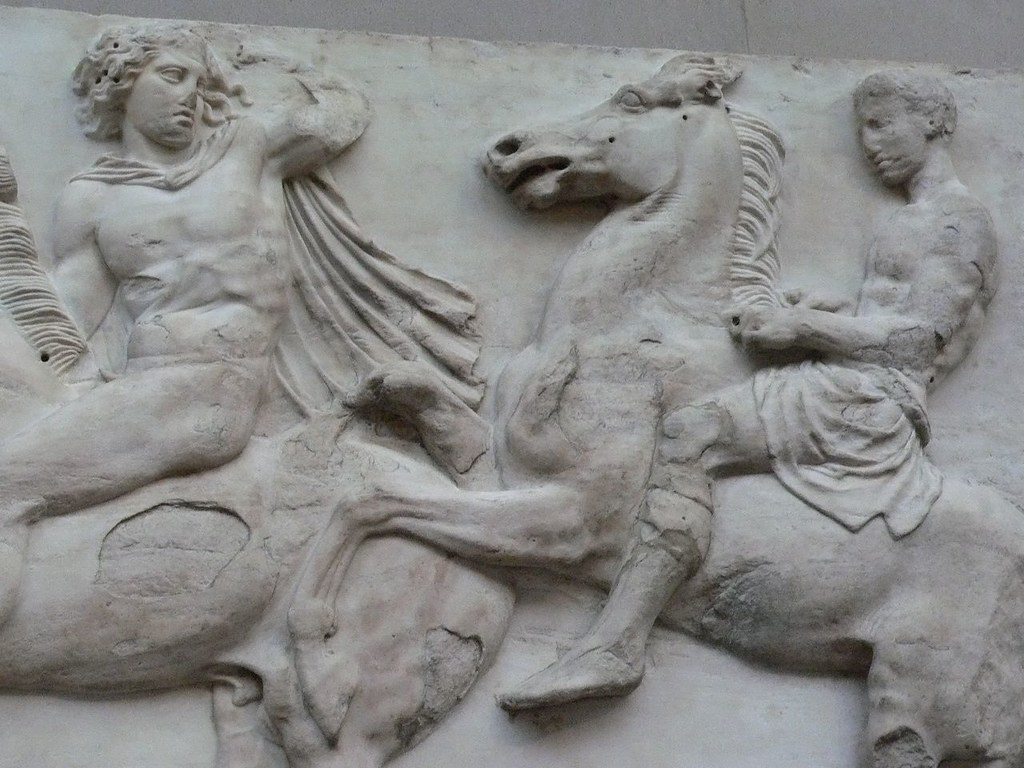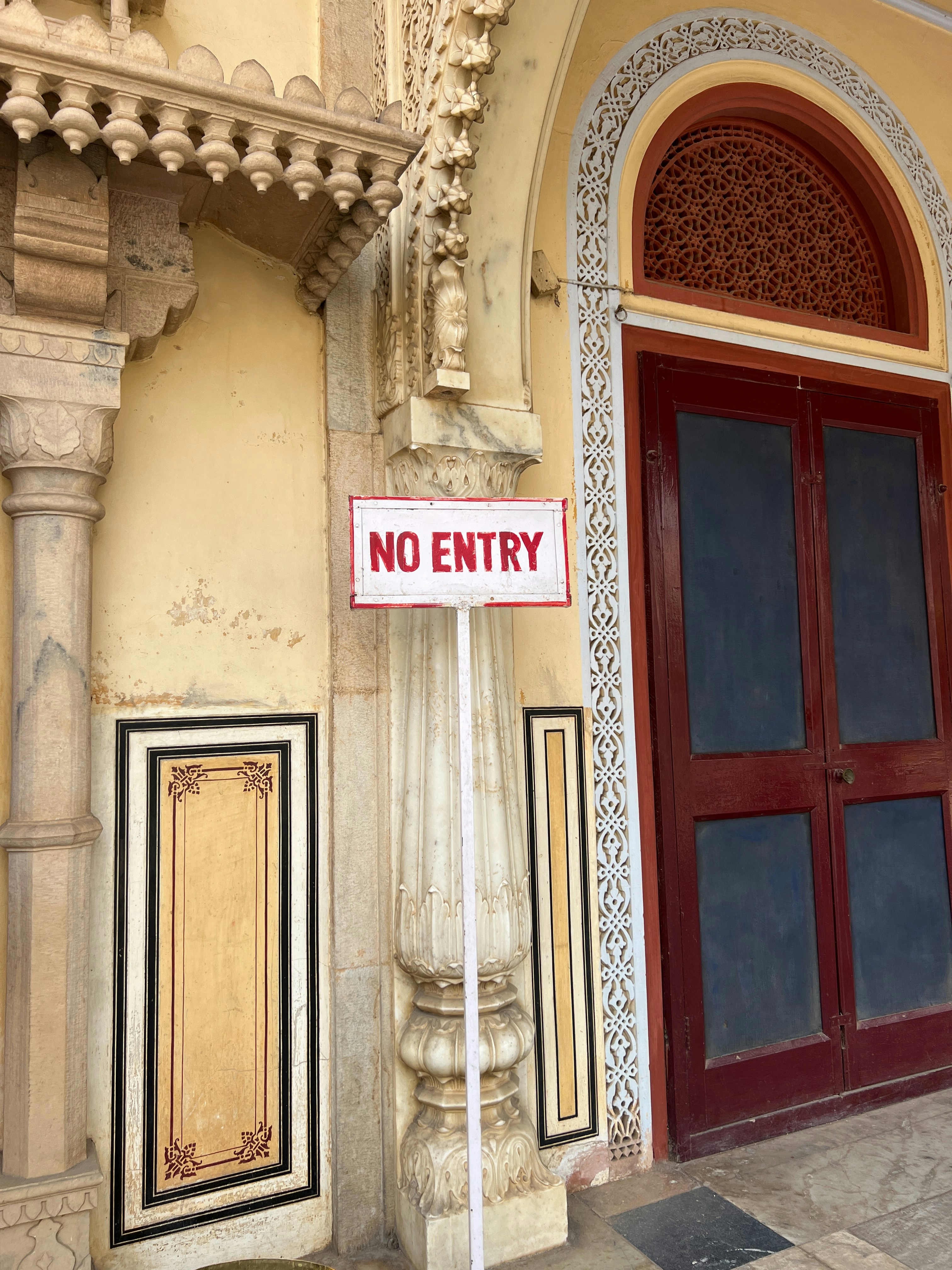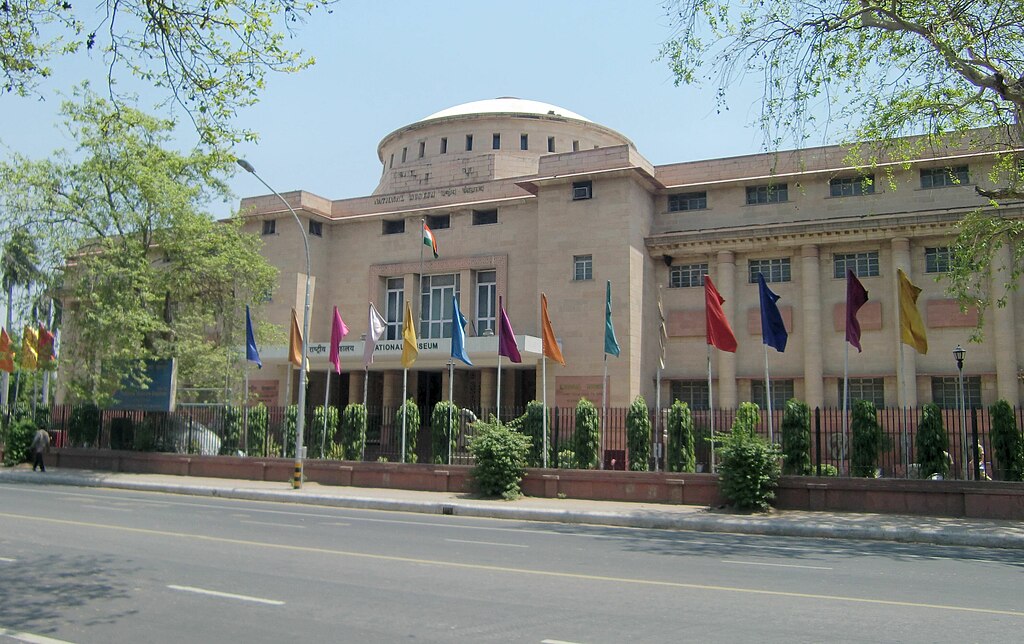Museums that claim to be encyclopaedic have promoted travelling exhibitions, loans and digital repatriation as alternatives to returning cultural property.
 The Parthenon Marbles in the British Museum have been at the centre of a long-running squabble whether they should be returned to Greece. : Mary Harrsch via Flickr CC BY-NC-SA 2.0 DEED
The Parthenon Marbles in the British Museum have been at the centre of a long-running squabble whether they should be returned to Greece. : Mary Harrsch via Flickr CC BY-NC-SA 2.0 DEED
Museums that claim to be encyclopaedic have promoted travelling exhibitions, loans and digital repatriation as alternatives to returning cultural property.
International Museum Day, which falls on May 18, is themed this year on “Museums for Education and Research”. According to the International Council of Museums, it aims to “underscore the significance of museums as dynamic educational institutions fostering learning, discovery, and cultural understanding”.
That’s easier said than done because museums are politically charged spaces.
Apart from (re)constructing history, they are often also at the centre of a tug-of-war over the ownership of cultural property. Not only that, the global art market has meant that museums and galleries play a vital role in determining which artists, and their identities, to highlight and which to underplay.
Cultural diplomacy adds another dimension to the profile of museums; the exhibitions they stage in other countries symbolise cooperative ties between states, making them the face of liberal politics.
An aspect of museums and galleries, particularly in Europe, that often gets sidestepped is their colonial origins. Prominent European museums owe much of their collections to imperialism.
As empires spread, objects from the colonies began to make their way to imperial centres where they were eventually housed and displayed in museums as we know them today.
Little wonder then that these institutions have been squeamish about their colonial credentials, especially when it comes to claims from former colonies to repatriate these objects.
Repatriation claims touch upon a larger issue about historical representation and how museums exhibit colonialism, if at all.
Since Britain ruled over a vast empire, the engagement of British museums with their colonial past and how they repurposed their collections in the 21st century would be interesting to see.
From the colonial origins of multicultural Britain today, to the 2019 YouGov poll that revealed nearly one-third of the British public polled felt proud of the British Empire, it is evident that Britain’s equation with its history is complex.
These complexities are only lightly reflected in its museums and art galleries.
Tate Britain’s ‘Artist and Empire’ exhibition, which travelled from Britain to Singapore between 2015 and 2017, was among the few exhibitions curated in Britain to explicitly focus on imperialism.
The Tate regarded its 2019 statement on slavery as a “starting-point for reassessing the legacies of historical slave-ownership at Tate”.
This is significant since its benefactor, Henry Tate, had a thriving business in the sugar industry which in turn flourished on slave trade. Also, many of Tate’s Trustees had served as civil servants of the British Empire.
The year 2017 was marked by several events in the UK celebrating 70 years of Indian independence, as part of the UK-India Year of Culture.
The celebrations included the exhibition “India and the World: A History in Nine Stories”, a collaboration between the British Museum and two Indian museums.
A selection of objects from the British Museum, juxtaposed with those in India, were exhibited in Mumbai and New Delhi.
The aim was to showcase how interconnected India was with the rest of the world through the ages. As Neil MacGregor, former Director of the British Museum, noted, these interconnections showed “just how global India has been all along”.
The exhibition’s feel-good narrative was in keeping with the concerted efforts European museums have made to pitch themselves as universal and cosmopolitan.
Cosmopolitanism’s nesting of identities, akin to a matryoshka doll, suits museums well. It enables them to argue that history must be framed in global terms and that, by inference, they are telling the history of humanity.
Piecing together global history, through objects from all over the world, makes for a good story. It is easy to imagine why encountering its sheer sweep under one roof should attract people from all over.
Museums and galleries in Britain receive 120 million visitors each year. The British Museum alone draws 6.7 million annually. Hence, it is no coincidence that “encyclopaedic” museums (such as the British Museum and the Louvre) should highlight their cosmopolitan appeal.
What does being encyclopaedic have to do with colonialism? A lot, actually.
Museums assert that objects, regardless of where they came from or who claims them as their own, are held ‘in trust for the nation and the world’, as the British Museum puts it. They are seen to belong to humanity as a whole.
By this token, repatriation claims by states and communities appear as parochial and self-limiting, lesser possibilities that mustn’t be entertained.
Herein lies the paradox of the modern museum; it wields the capacity to enhance both exclusion and access. An object can be viewed but never owned.
In assuming this stance, high-profile museums find strength in numbers.
The discourse on global custodianship makes its way down from powerful institutions (such as the Bizot Group, a powerful clique of 40 museums) to inform how cultural property should be displayed.
The group adopted, in 2002, the Declaration on the Importance and Value of Universal Museums, underscoring that “museums serve not just the citizens of one nation but the people of every nation”. This notion of shared heritage allows them to deflect attention from the historical context in which the objects were extracted.
But common heritage has also become a reason to share. Travelling exhibitions, such as “India and the World”, work on the assumption that the world could, and must, be made interconnected through the circulation of objects.
It is evident why collaboration should matter more than contestation.
British Museum director Hartwig Fischer observed in his foreword to the exhibition catalogue that “As a museum of the world, for the world, the British Museum can play an important role in working together with partners across the globe to tell such stories”.
Indeed, exhibitions and the loaning of objects to museums in other countries have become a workable solution, a means of reconciling cosmopolitan and communitarian forces.
Another way in which major museums have sought to circumvent ownership claims is through digital repatriation, that is, by giving indigenous communities electronic access to property they hold sacred and spiritually valuable.
The strategy is critiqued as a “dodge” that, in the name of sharing, obviates the need to return the objects themselves, besides being culturally insensitive, and unviable for communities lacking access to the requisite technology.
There is no denying that museums are today expected to cater to multiple expectations of visitors, ranging from the educative to the aesthetic. In a highly globalised and competitive world, museums have worked towards improving the visitor experience, but less so towards explaining the contested nature of their acquisitions.
The now-shuttered British Empire and Commonwealth Museum in Bristol was a notable exception, offering space to contending narratives.
But, as curator and cultural historian Gus Casely-Hayford notes: “Most museums do not have the facilities to accommodate or capture public anxiety, anger or happiness.”
For the ones that do, it is critical that they examine and acknowledge how they were, and are, complicit in upholding colonialism.
It would be a touch ironic, otherwise, given that the International Museum Day this year is pushing for “a more conscious, sustainable and inclusive world”.
Jayashree Vivekanandan is an Associate Professor at the Department of International Relations, South Asian University, New Delhi.
Originally published under Creative Commons by 360info™.
Editors Note: In the story “Memory keepers” sent at: 20/05/2024 13:25.
This is a corrected repeat.










